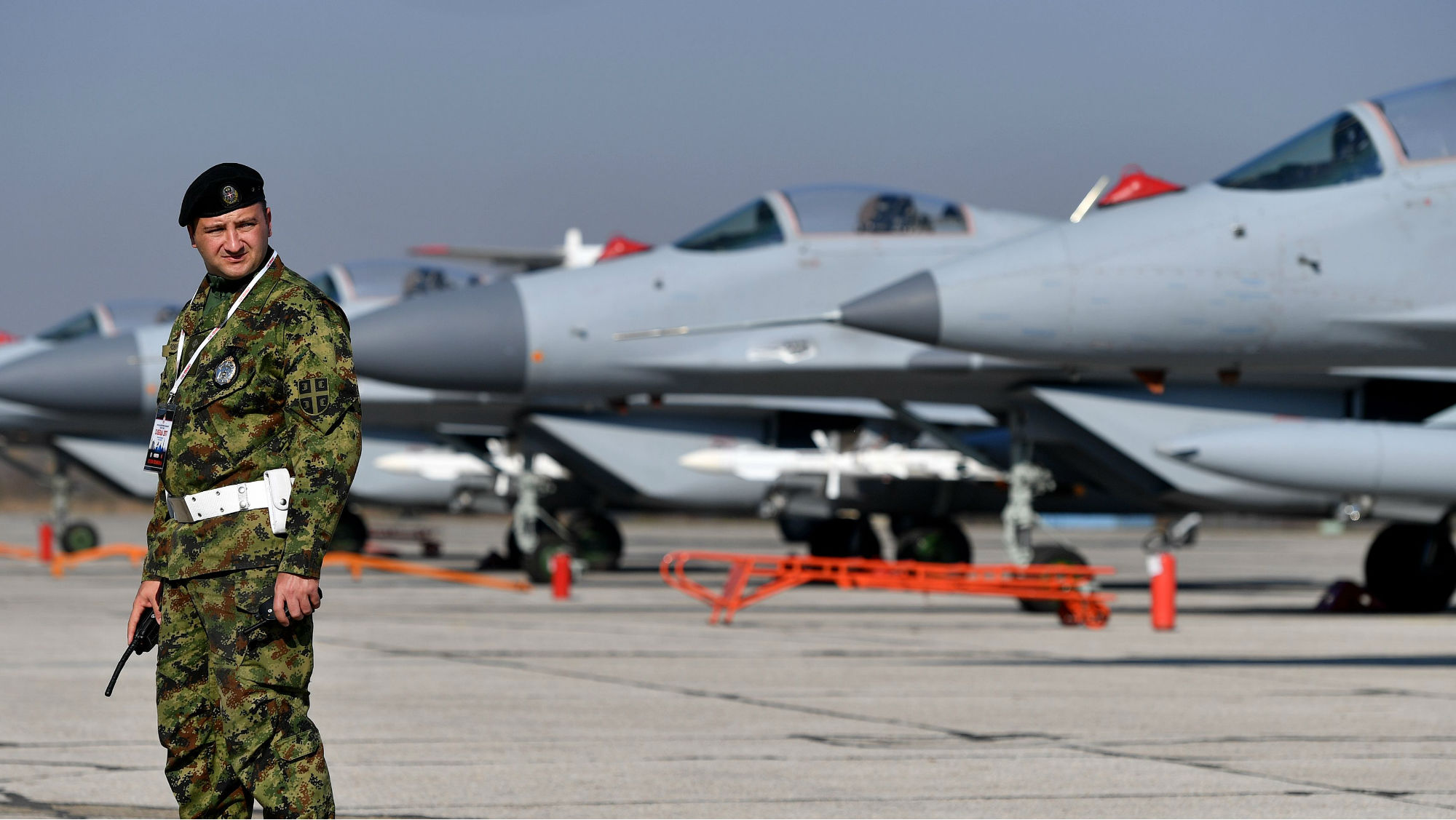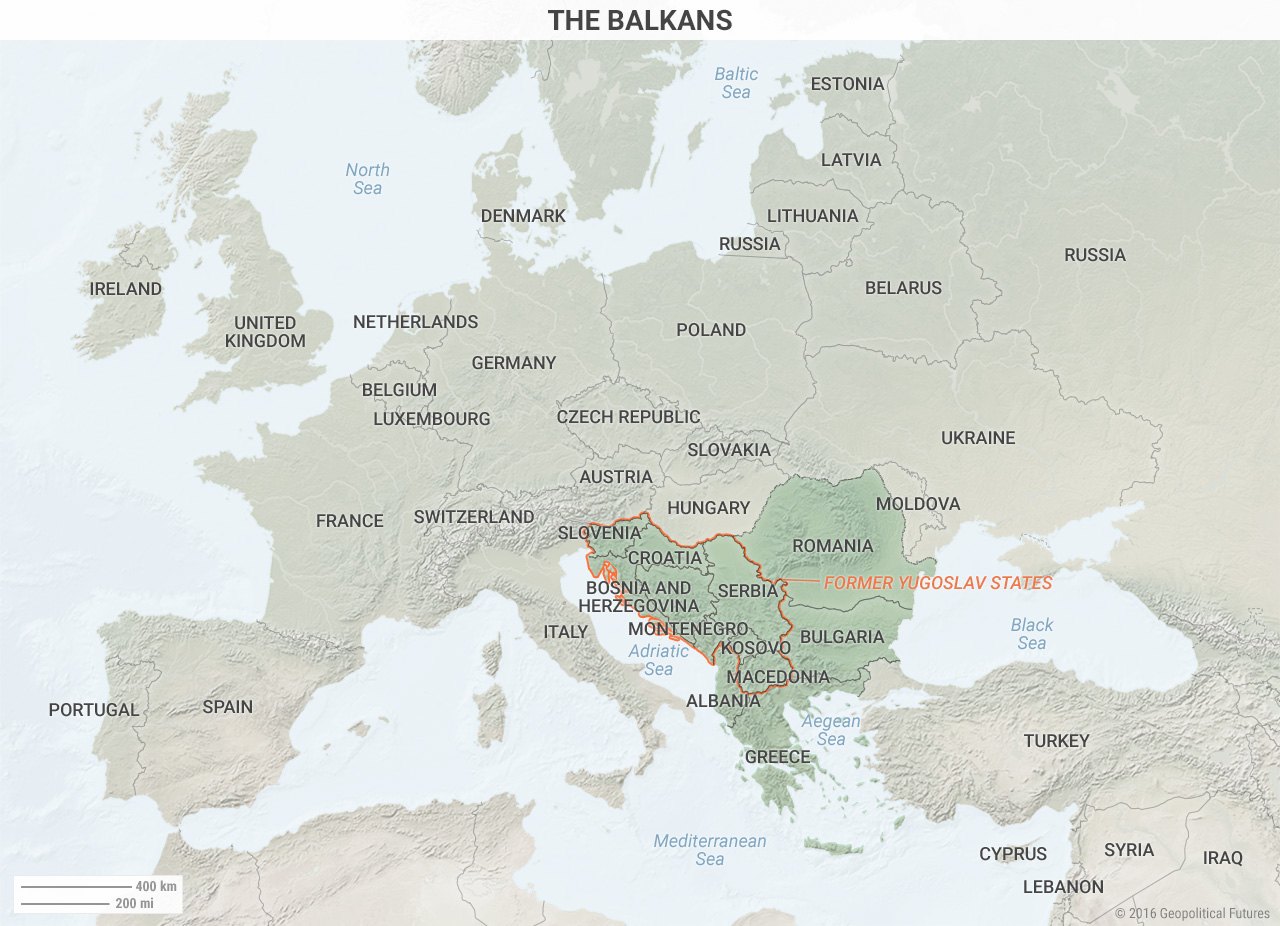By Allison Fedirka
There’s nothing unusual about Serbian and Russian officials commemorating Belgrade Liberation Day together. It is, after all, the anniversary of the capital’s liberation in 1944 from the German army, an event aided in no small part by the Red Army. But the way they commenced this year’s ceremony was strange: Russia had recently sold MiG-29 fighter jets to Serbia, and Moscow is considering selling it anti-missile systems – likely the Buk-M1, Buk-M2 and/or Pantsir-S2.
It’s understandable why Serbia would want these weapons. NATO airstrikes in 1999 confirmed in the minds of Serbian officials the need for a modern air defense system. And the fact that its acquisition is even being discussed suggests Serbian efforts to get one are gaining momentum. But since Serbia is a country in which foreign powers vie for influence, buying new weapons is not a purely domestic affair.
A Security Monopoly
Serbia sits in the heart of the Balkan Peninsula, the crossroads of European, Russian and Turkish interests, the place where the groundwork for World War I was laid. Its location confers on it a disproportionate amount of influence and enables the government in charge to strategically flirt with all the regional powers in an attempt to advance its national interests. It agreed to an EU-led road map, for example, to enhance regional economic cooperation in the Balkans despite already being a member of a free trade zone with Russia. (Since Russia’s economic downturn in 2015, Serbia has dealt more with EU members and with signatories to the Central European Free Trade Agreement.) Several countries – most notably Turkey, which has historical ties to the region – are interested in investing in Serbia, and Serbia is happy to take their money, eager as it is to expand its economy through foreign investment.
Though there may be space for friendly economic competition in Serbia, the same cannot be said for matters of defense. Improved Serbia-Russia relations in that regard are especially problematic for NATO, which acted against Serbia in its war against Kosovo in the 1990s. (NATO abstained from other conflicts arising from the dissolution of Yugoslavia but participated in this one because it considered Belgrade’s actions genocidal.) This was a historic moment: It was the first post-Cold War Western intervention to secure Europe without the support of the U.N. Security Council, and it was successful. It removed Serbian military forces from Kosovo, set up a peacekeeping force, facilitated the return of refugees and established a political framework for Kosovar independence. The West, through NATO, has been the dominant political power in the Balkans ever since.
Serbia’s weapons acquisition from Russia threatens NATO’s security monopoly. The missile presence alone would significantly increase the cost of another intervention in Serbia.
And it is in keeping with recent initiatives to bolster its military – initiatives a country such as Serbia, which has been invaded and occupied so many times throughout history, considers critical. To that end, it has already begun to produce and overhaul its own military hardware. It announced late last year that it would pursue better military ties with Russia and purchase fighter jets, surface-to-air missiles and armored vehicles. It has also pledged to improve ties with Belarus, from which Belgrade is expected to buy the S-300 system and seven MiG-29s in November.
A New Foothold
For Russia, arms sales are a welcome source of revenue, but the missile transaction is about more than money: It’s about adding a military element to the cultural and economic presence it already has in the Balkans.
Russia has long maintained ties with Serbia, a strategically important state that has shielded Russia from powers such as the Austro-Hungarian and Ottoman empires. After the Soviet Union collapsed, Moscow was unable to project power, too economically weak and too globally irrelevant to aid Serbia as it once had. When war broke out on the peninsula in the 1990s, Russia was unable to intervene on Serbia’s behalf or contest the NATO intervention. Its involvement was relegated largely to political and economic support. It backed Serbia’s stance on Kosovo, and state-owned oil firm Gazprom invested in companies that contribute to Serbia’s budget.
Russian President Vladimir Putin ran for office partly on a platform of promising to reclaim Russian strength. Like many in the current government, he remembered how impotent his country had become. It is little wonder, then, that during his time in office ties with Serbia have improved dramatically. The relationship enables Russia to regain a foothold in a region that has for years been dominated by the West. (Macedonia and Bosnia-Herzegovina are also non-NATO members that Russia could court.)
That Serbia is an arena for such a competition has encouraged it to play both sides, pursuing the opportunities that best suit its interests. It discusses weapons purchases with Russia, is part of Partnership for Peace and works with NATO on specific missions, talks to Turkey, and even raised the possibility of establishing defense cooperation with Bosnia. This kind of behavior is rational, but it makes it difficult to determine what its long-term goals are. In the meantime, the new weapons it is buying will help deter attacks from those who would use Serbia for their own ends.









